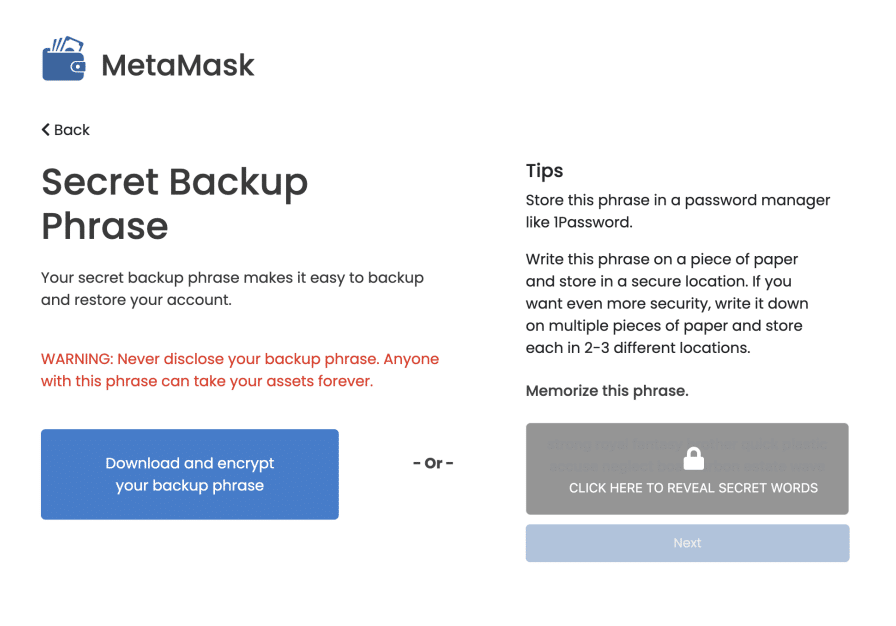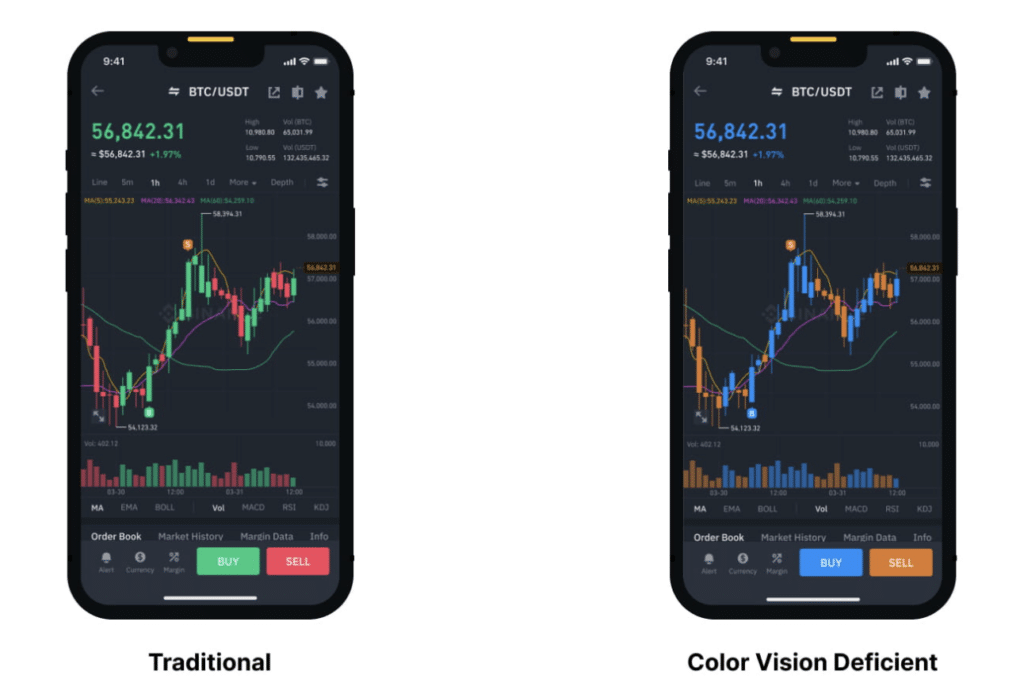Crypto claims to be inclusive. Not for visually impaired, as it turns out

Crypto, with its promise of financial inclusivity, ironically remains largely inaccessible to the blind and visually impaired.
In 2017, Bitcoin.com published an interview with Craig McGee, a blind Bitcoin (BTC) enthusiast from the UK. Born with Norrie disease, a genetic disorder, he faced unique obstacles in his Bitcoin endeavors. “The biggest hurdle for the blind is accessibility,” Craig explained.
“Most of the wallets are difficult to use, and the QT client interface doesn’t work too well with a screen reader. So I have to do most things with the debug console, and I have to use the ‘help’ command to remind me of some of the commands. Some wallets are even worse as the menus are not read out by the reader so I can’t get them to debug.“
In 2024, this story still isn’t unique to Craig; it’s a shared experience among many of the 43 million blind and 295 million severely visually impaired individuals worldwide. Their journey in the digital financial world is filled with challenges that are frequently missed or underestimated.
Engaging with crypto platforms, be it wallets or exchanges, demands a level of visual interaction that isn’t always compatible with assistive technologies like screen readers. This gap in accessibility means that a significant portion of the global population is inadvertently excluded from participating fully in the evolving digital economy.
Blind users and popular crypto wallets
A recent study examining the accessibility of crypto wallets revealed that eight out of ten widely used wallets didn’t have any dedicated accessibility features.
Users of popular wallets like MetaMask and Coinbase faced challenges due to confusing layout structures, poor color contrast, and inadequate keyboard navigation support.
The study’s usability tests showed that blind participants took, on average, 70% longer to complete tasks compared to their sighted counterparts.
This significant delay was largely due to accessibility barriers like unlabeled buttons and screen reader incompatibilities. Such hurdles not only slowed down their interaction but also intensified security risks.
For instance, blind users found it particularly challenging to handle critical security protocols, such as verifying secret recovery phrases. The poor compatibility with screen readers often forced them to either skip these essential steps or resort to less secure methods, like saving sensitive information in plain text files.

Moreover, the study highlighted inconsistencies in notifications and labeling within these platforms.
Participants, especially in the context of MetaMask, faced difficulties in executing basic operations like copying wallet addresses, primarily due to the lack of audible confirmations and clearly labeled buttons.
Kyrie Zhixuan Zhou, a PhD student at the University of Illinois and co-author of the study, told crypto.news:
“Our research revealed interrelated accessibility, learnability, and security issues in popular crypto wallets. Blind users face unique challenges in tasks like confirming secret recovery phrases. Developers must prioritize accessibility from the outset.”
The study also pointed out that confusion regarding the interface and crypto concepts was not exclusive to visually impaired users; however, this issue was markedly more pronounced for them.
Rethinking accessibility in the crypto space
Crypto.news reached out to several wallet providers and exchanges for comments regarding the accessibility of their platforms for the blind.
Bitget’s reply acknowledged the lack of advancements in the crypto industry for visually impaired users. The exchange mentioned plans to introduce features similar to Binance’s palette for color vision deficiencies. However, they did not provide a specific timeline.
In 2022, Binance added a new palette for users with color vision deficiencies, recognizing that many users struggle with red and green colors, which are crucial in trading interfaces. This move was much needed, considering color vision deficiencies affect around 300 million people globally.

Other notable initiatives include those by Haptics DAO, a U.S.-based startup developing an audio and haptic feedback platform. The project aims to aid visually and hearing-impaired users in accessing wallets, trading crypto assets, and understanding financial data like inflation rates and price feeds. It uses audio, vibrations, and tactile sensations to communicate with the users.
Over the past year, the team conducted research to assess the current accessibility of blockchain platforms. In an interview with crypto.news, Mona Rassouli, Founder & CEO of Haptics DAO, said that the first findings reveal “a significant need for improvement” in making dapps more user-friendly.
“Even seemingly simple user interfaces such as decentralized exchanges, were largely inaccessible to users. Inconsistent tabbing, insufficient color contrast, and improper alerting were among the major sources of confusion and deterred the majority of users.”
There have been other efforts to make crypto knowledge more accessible. A strong example is the translation of the Bitcoin white paper into Braille, allowing blind individuals to access and understand the foundational document of Bitcoin.
These developments, while promising, underscore the vast amount of work still needed in the crypto space to become truly accessible to all, including the visually impaired.
Accessible design roadmap for the blind and visually impaired
Mona Rassouli and Kyrie Zhixuan Zhou, interviewed by crypto.news, shared valuable insights on enhancing accessibility for the blind and visually impaired on crypto platforms. Drawing from their recommendations, here’s a list of what can be done:
Screen reader compatibility: To ensure accessibility, wallets and exchanges should guarantee that their platforms seamlessly integrate with screen readers, providing audio descriptions and feedback for all text and interactive elements. This approach empowers blind and visually impaired users to navigate these platforms independently.
Color contrast and consistency: Crypto companies must adhere to the Web Content Accessibility Guidelines (WCAG) for color contrast, ensuring that text distinctly stands out against background colors. Maintaining a uniform color scheme throughout the platform is essential to prevent user confusion.
Text resizing and formatting: Platforms should also allow users to customize text size and formatting according to their visual preferences. This ensures that content remains accessible and legible across various device sizes and zoom levels, accommodating users with varying degrees of visual impairment.
Direct labeling and alternative text: In addition, crypto wallets should implement direct labeling for interactive elements to ensure clear information conveyance, regardless of color. Providing alternative text for images and icons is equally vital, offering context for screen reader users and enabling intuitive interaction with the platform.
User education: Embedding educational resources like videos and text-based guides directly within the crypto platform is crucial. These resources should demystify core concepts and provide precise instructions for platform utilization, enhancing accessibility for all users, including those with visual impairments.
User feedback integration: Establishing a feedback mechanism is also pivotal for crypto wallets and exchanges. This system should actively encourage users, particularly those who are blind or visually impaired, to report accessibility issues and propose enhancements.
Accessibility testing and certification: Crypto platforms should undergo regular accessibility audits and testing, with active participation from blind and visually impaired individuals. Additionally, obtaining certification from reputable accessibility organizations showcases a commitment to inclusivity, building trust within the user community.
Making crypto platforms more user-friendly for blind and visually impaired individuals, allowing them to navigate with confidence, not only meets legal and ethical responsibilities but also nurtures a more inclusive and diverse crypto ecosystem, ultimately benefiting everyone.














